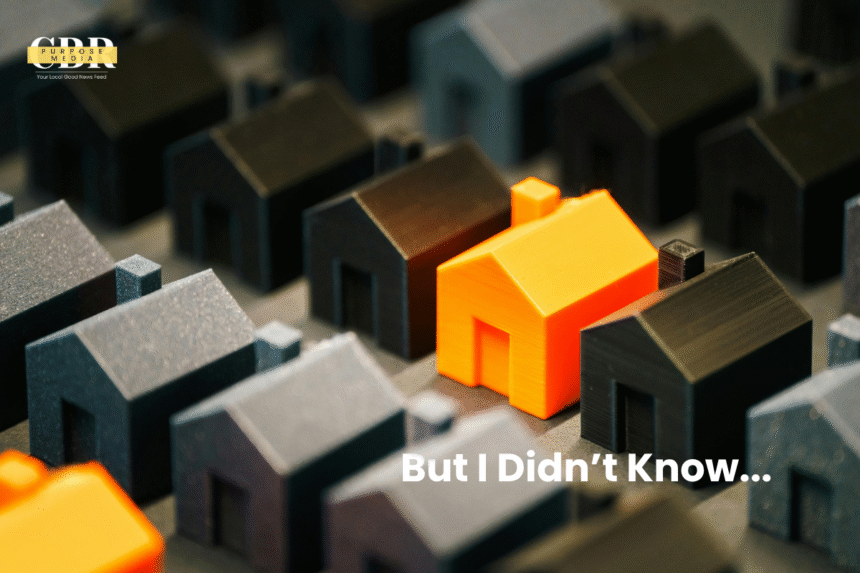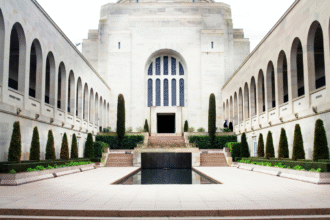I didn’t know that a full-time worker on minimum wage might have only $33 left each week after paying for rent, food, and transport.
I didn’t know that poverty could look like a parent working two jobs, a student skipping meals, or a neighbour quietly sitting in the dark because the electricity bill is overdue, again.
Canberra is often described as one of the most liveable cities in Australia. Our median income is the highest in the country, our streets are lined with new townhouses, and our cafés are full most weekends. Yet behind this apparent prosperity, thousands of locals are struggling to keep their heads above water.
Poverty isn’t a faraway problem
The Anti-Poverty Week 2025 Snapshot reveals a reality that many of us have missed: around 10% of Canberrans live below the poverty line. For a single person, that means living on less than $584 a week after housing costs. It’s a number that sounds clinical, until you picture what that means in practice.
It means choosing between paying the rent or buying groceries.
It means skipping meals so the kids can eat.
It means layering up under blankets because the heating bill has doubled.
Meet Emma
Emma is a 42-year-old single mum from Tuggeranong with a ten-year-old son. She works part-time in retail and supplements her income with the Parenting Payment. She earns just enough to keep a roof over their heads but not enough to ever get ahead.
“I used to joke that my electricity bill was my second rent,” she says. “But it’s not funny anymore. Last winter, I went three months without turning the heater on properly. My son slept in a beanie most nights.”
The data shows Emma isn’t alone. Energy debt in the ACT has risen by nearly 70% in five years, and electricity bills were the top issue reported by financial counselling services this year. The ACT’s fixed $800 rebate doesn’t stretch as far as it used to.
So, while Canberra’s winter might look picture-perfect from a café window, for many families it’s a season of endurance rather than enjoyment.
In a city with some of the highest housing costs in the country, only 1% of rentals are affordable for a full-time minimum-wage earner. For people on JobSeeker or Youth Allowance, there are no affordable rentals at all.
That statistic might sound impossible until you meet Mitch, a 23-year-old studying at CIT while working casually in hospitality.
When his share house lease ended, he started looking for a place of his own. “I thought I’d be fine,” he says. “I had savings and a steady job. But after weeks of applying, I realised my budget didn’t even come close.”
He now rents a single room in an older couple’s spare bedroom. It’s technically “affordable”, but it means sharing a kitchen, bathroom, and living space with strangers.
The Rental Affordability Snapshot confirms what Mitch experienced firsthand: Canberra’s rental market locks out people on low incomes entirely. Not a single rental in the ACT is affordable for someone on JobSeeker, Youth Allowance, or disability support.
We often imagine homelessness as rough sleeping, but in Canberra, it can look like sleeping in a car, couch-surfing, or staying in temporary motels. Alarmingly, one in five people accessing homelessness services in the ACT are employed, the highest proportion in the country.
That includes people like Danielle, a cleaner working full-time at a government building. She earns $28 an hour but after rent, fuel, and childcare, she barely covers essentials.
When her landlord increased rent by $80 a week, she couldn’t keep up.
“I never thought I’d be the one calling a homelessness service,” she says. “I kept thinking, I work full-time, how can this be happening?”
The snapshot calls this out clearly: housing stress is now the leading driver of homelessness in the ACT. Even working Canberrans are being pushed into crisis.
And for young people, the situation is even more stark. In 2023-24, 178 children under 18 sought help alone, without a parent or guardian. For a city as small and resource-rich as Canberra, that figure should stop us in our tracks.
When poverty deepens, it’s often the community organisations who see it first. According to the snapshot, 83% of Canberra’s community organisations reported higher demand for help this year.
At Communities@Work, food relief requests are up by a third. Care Financial Counselling has seen record energy hardship. Food pantries that once served a few dozen people a week now see hundreds.
Many of these organisations are running at capacity with limited funding and staff exhaustion. Yet they keep going, fuelled by compassion and community spirit.
As one frontline worker said in the ACT Council of Social Service’s (ACTCOSS) latest survey, “We’re not just giving out food, we’re giving out hope.”
The report states plainly: “Poverty in the ACT is a political choice.”
That’s not rhetoric, it’s a recognition that poverty isn’t inevitable. Canberra has the wealth, infrastructure, and knowledge to end it. What’s missing is sustained policy action.
Here’s what the Anti-Poverty Week 2025 Snapshot calls for:
- Expand social housing to make up at least 10% of the total housing stock in the ACT.
- Raise the Rate for Good, increasing base income supports like JobSeeker to at least $589 per week.
- Invest sustainably in community services, ensuring they’re properly funded for workforce and delivery costs.
- Provide targeted cost-of-living supports, including eviction prevention payments and ongoing energy hardship relief.
These aren’t abstract policy ideas, they’re lifelines that could help people like Emma, Mitch, and Danielle build stability again.
In Canberra, 48% of households earning under $30,000 a year are food insecure, up five percent in just two years. That means nearly half of our lowest-income families worry about running out of food before they can afford more.
In the Food Relief Network’s 2024 survey, most ACT food services reported a 25% increase in demand, with some seeing up to 70% more people.
Teachers quietly buy snacks for students who come to school hungry. Neighbours share meals through community pantries. Parents skip dinner to make sure their kids can have breakfast. For a city built on public service, it’s a painful contradiction: in the nation’s capital, children are still going to bed hungry.
Beyond the statistics, poverty has an emotional weight. It’s the constant mental load of calculation and compromise, working out which bill to delay, what meal can stretch furthest, how to say yes to a school excursion when the money just isn’t there.
One local mother described it like this:
“It’s like living inside a snow globe. Everything looks calm from the outside, but inside you’re always swirling, trying not to crack.”
It’s exhaustion without rest. Worry without relief. The quiet shame of having to ask for help in a city that prides itself on success.
The solutions aren’t only in government hands. The snapshot lists actions that any Canberran can take:
- Write to your local MLA about prioritising poverty reduction. In a small jurisdiction, every letter genuinely counts.
- Join campaigns like Raise the Rate for Good or Everybody’s Home calling for higher income support and more social housing.
- Donate or volunteer with a local community organisation. Whether it’s St John’s Care, Communities@Work, Care, or your local food pantry, such as HelpingACT every act of generosity ripples outward.
- Start conversations. The more we talk about poverty without stigma, the more we dismantle the myth that Canberra’s fine just because it looks fine.
Because if poverty is a political choice, then so is compassion.
Despite the statistics, there’s resilience in every corner of this city. There’s a young student volunteering at a food co-op between exams. A grandmother who drops groceries on a struggling neighbour’s doorstep. A local café donating leftover bread to shelters instead of bins.
And there are organisations, ACTCOSS, Care, Uniting, Vinnies, and countless others, who believe that Canberra’s wealth can be shared more fairly.
Anti-Poverty Week reminds us that ending poverty isn’t about charity, it’s about justice. It’s about ensuring everyone in our city, no matter their postcode or pay slip, can live with dignity and security.
As one community worker said, “You can’t build belonging when people can’t afford to belong.”
What poverty looks like in Canberra, by the numbers
- 10% of Canberrans live in poverty.
- 1% of rentals are affordable for a minimum-wage worker.
- 0 rentals are affordable for anyone on JobSeeker or Youth Allowance.
- 34% of single-parent households live in poverty.
- 25% of people with disability live in poverty.
- 67.7% increase in ACT households in energy hardship programs since 2019.
- 83% of community services report rising demand.
Behind each number is a person. Behind each person is a story worth hearing.
Canberra has the highest median income in Australia. We have the knowledge, the data, and the resources to end poverty, we simply have to decide to do it.
It’s not an easy fix, but it’s not impossible either. Expanding social housing, lifting income support, and properly funding the community sector are achievable steps that would change lives overnight.
When we say poverty is a political choice, we’re also saying that fairness is one too.
So, this Anti-Poverty Week, ask yourself: what didn’t you know and what will you do now that you do?
If you or someone you know is struggling with food, housing, or bills, visit local services such as Care Financial Counselling, Communities@Work, UnitingCare Kippax, or St John’s Care.
Learn more: ACTCOSS Anti-Poverty Week 2025 Snapshot








